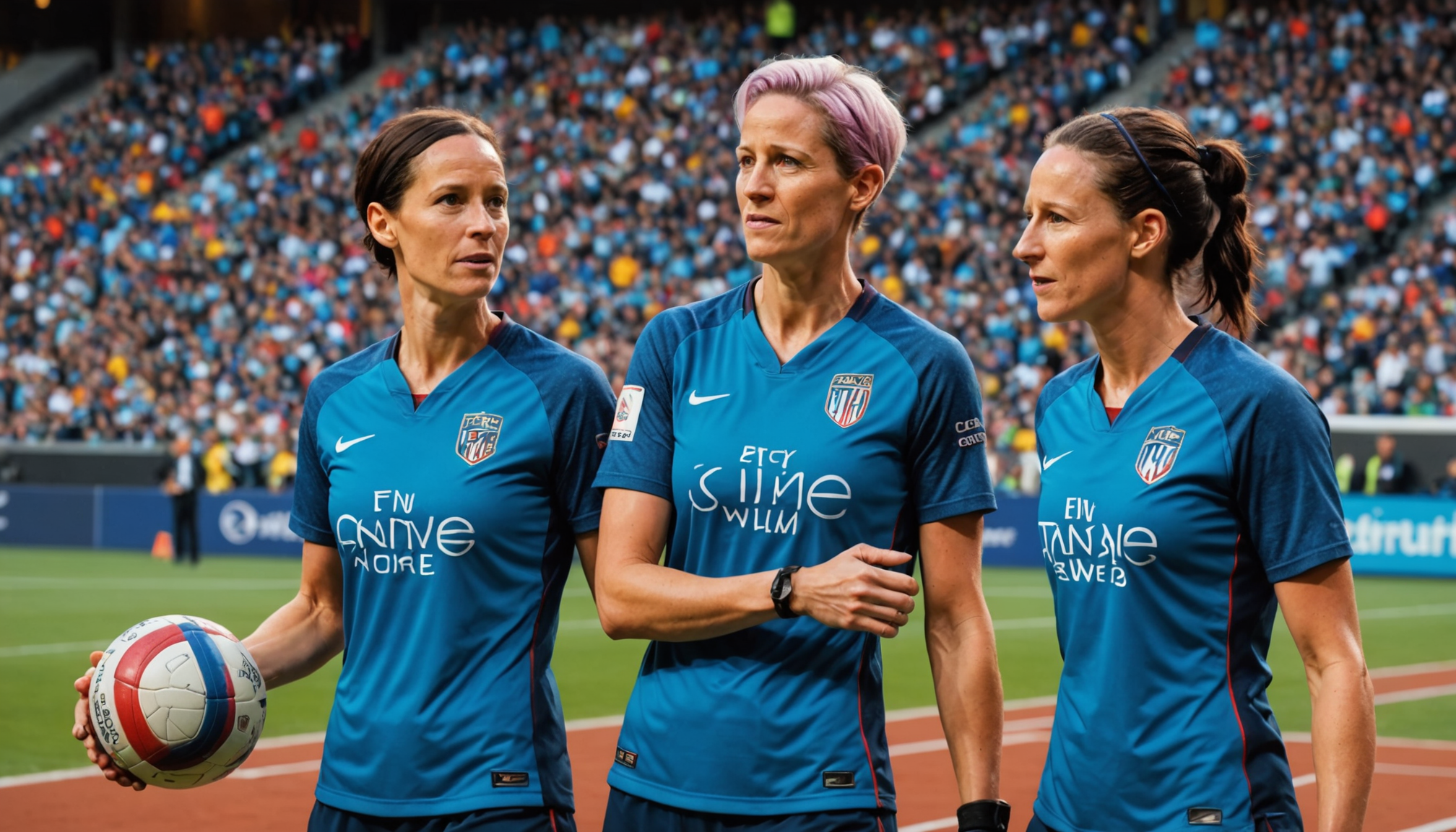
FIFA Research on Female ACL Injuries and Implications for Sustainable Development Goals
FIFA has initiated a study investigating the potential correlation between the menstrual cycle in women and the susceptibility to anterior cruciate ligament (ACL) injuries. This research highlights significant biological differences between sexes, which has important implications for health, gender equality, and well-being, aligning with several Sustainable Development Goals (SDGs).
Background and Context
Historically, discussions around sex differences in athletic performance have been influenced by social and political narratives that often downplay biological distinctions. However, this FIFA-commissioned study confronts these assumptions by focusing on female-specific physiological factors that may affect injury risk.
Key Findings of the FIFA Study
- Women are two to eight times more likely to suffer ACL tears compared to men.
- Fluctuations in female hormones such as estrogen and relaxin during the menstrual cycle may increase the risk of ACL injuries.
- The hormone relaxin, which degrades collagen, may cyclically impact the quality of ACL tissue in women.
The study aims to identify correlations between peaks in menstrual relaxin levels and the incidence of ACL injuries among female athletes. This research contributes to a better understanding of female athlete health and injury prevention strategies.
Relevance to Sustainable Development Goals
- SDG 3: Good Health and Well-being
The study promotes improved health outcomes for female athletes by identifying risk factors specific to women, enabling targeted injury prevention and treatment. - SDG 5: Gender Equality
By acknowledging and addressing biological differences, the research supports gender-sensitive approaches in sports medicine and promotes equality in athletic opportunities and safety. - SDG 10: Reduced Inequalities
The findings encourage inclusive policies that consider the unique needs of female athletes, reducing disparities in sports injury management and healthcare access.
Response from the Athletic Community
Prominent athletes such as Sue Bird and Megan Rapinoe have publicly discussed the study, acknowledging the long-known link between menstrual cycles and ACL injuries. Their engagement underscores the importance of integrating scientific evidence into athlete care and training programs.
- Sue Bird emphasized that awareness of menstrual cycle impacts on ACL injuries has existed for decades.
- Megan Rapinoe highlighted the need for actionable research focused on prevention and management rather than mere identification of risks.
Implications for Gender and Sports Policy
The study explicitly focuses on biological females and their unique physiological characteristics, implicitly recognizing the biological distinctions between sexes. This has sparked discussions on the inclusion of transgender athletes in sports and the need for further research to ensure fair and safe competition.
Conclusions and Future Directions
- The FIFA study reinforces the importance of acknowledging biological realities in sports science and medicine.
- It highlights the necessity of gender-specific research to improve athlete health and performance.
- Future research should continue to explore inclusive approaches that respect both biological differences and gender identities, supporting SDG targets related to health, equality, and reduced inequalities.
Overall, this research contributes to a more nuanced understanding of female athlete health, supporting global efforts to promote well-being and gender equality in sports and beyond.
1. Sustainable Development Goals (SDGs) Addressed or Connected
- SDG 3: Good Health and Well-being
- The article discusses health issues related to female athletes, specifically the risk of ACL injuries linked to the menstrual cycle and female hormones.
- It highlights the importance of understanding biological factors affecting women’s health and injury prevention in sports.
- SDG 5: Gender Equality
- The article touches on gender-related issues, including biological differences between men and women and debates around gender identity in sports.
- It addresses the recognition of women’s unique physiological characteristics and the implications for sports and health research.
- SDG 10: Reduced Inequalities
- The article indirectly relates to reducing inequalities by advocating for gender-specific research and acknowledging differences that may affect fairness and safety in sports.
2. Specific Targets Under Those SDGs Identified
- SDG 3: Good Health and Well-being
- Target 3.4: By 2030, reduce by one third premature mortality from non-communicable diseases through prevention and treatment and promote mental health and well-being.
- Target 3.8: Achieve universal health coverage, including access to quality essential health-care services and access to safe, effective, quality, and affordable essential medicines and vaccines for all.
- Target 3.d: Strengthen the capacity of all countries for early warning, risk reduction, and management of national and global health risks.
- SDG 5: Gender Equality
- Target 5.1: End all forms of discrimination against all women and girls everywhere.
- Target 5.5: Ensure women’s full and effective participation and equal opportunities for leadership at all levels of decision-making in political, economic, and public life.
- Target 5.b: Enhance the use of enabling technology, in particular information and communications technology, to promote the empowerment of women.
- SDG 10: Reduced Inequalities
- Target 10.2: Empower and promote the social, economic and political inclusion of all, irrespective of age, sex, disability, race, ethnicity, origin, religion or economic or other status.
3. Indicators Mentioned or Implied to Measure Progress
- For SDG 3 (Good Health and Well-being)
- Incidence rate of ACL injuries among female athletes compared to male athletes.
- Research data on hormonal fluctuations (e.g., estrogen, relaxin levels) and their correlation with injury rates.
- Number of studies or health programs addressing female-specific injury prevention in sports.
- For SDG 5 (Gender Equality)
- Proportion of sports research studies that specifically focus on women’s health and biological differences.
- Representation of women athletes and experts in sports science research and decision-making.
- Measures of gender-based discrimination or inclusivity in sports policies and practices.
- For SDG 10 (Reduced Inequalities)
- Inclusion metrics for marginalized groups in sports research and policy discussions.
- Assessment of fairness and equality in sports competition rules considering biological differences.
4. Table of SDGs, Targets, and Indicators
| SDGs | Targets | Indicators |
|---|---|---|
| SDG 3: Good Health and Well-being |
|
|
| SDG 5: Gender Equality |
|
|
| SDG 10: Reduced Inequalities |
|
|
Source: mynorthwest.com







